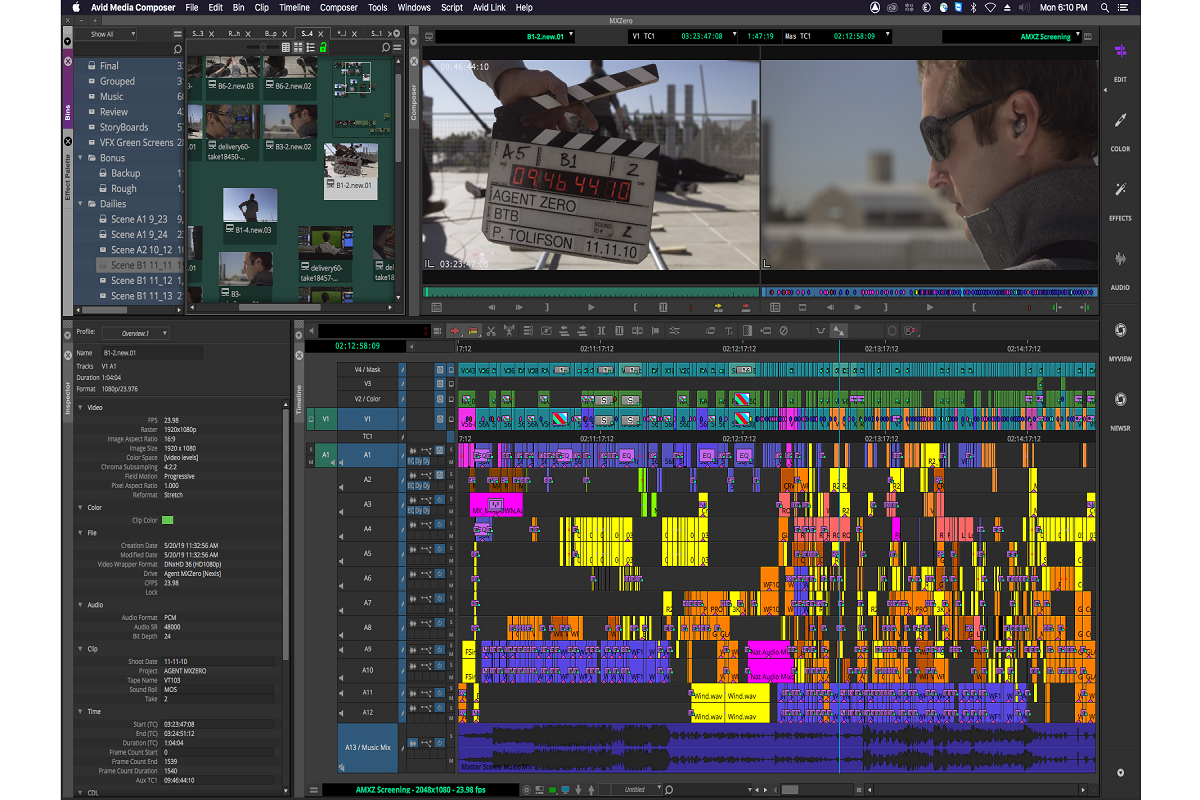Tools and software
How Media Composer works in Avid?

Media Composer is one of the most versatile video editing applications on the market. It gives you the ability to edit and manage videos in a variety of ways, from simple trimming and rearranging footage to more complex treatments like effects work or motion graphics. If you’re looking to start using Media Composer for your video projects, this blog post is for you. In it, we’ll explain exactly how Media Composer works in Avid and give you some tips on how to get the most out of it.
Table of Contents
What is Media Composer?
Image Source: Link
Media Composer is a powerful, versatile video editing software used by professional editors and filmmakers. It offers a wide range of features for editing and post-production, including multicam editing, chroma key and tracking, 3D compositing and more.
In this guide, we’ll walk you through the basics of how Media Composer works in Avid. We’ll show you how to create a simple project, add footage and effects, trim and adjust footage, export your project to Final Cut Pro X or Avid Media Composer Express for further post-production work.
How does Media Composer work in Avid?
Image Source: Link
Avid Media Composer is a powerful NLE used for professional video editing and production. It offers a wealth of features to help editors create high-quality videos. This article will provide an overview of how Media Composer works, including what features are available and how to use them.
First, you need to decide what type of project you want to work on. There are three main types of projects: video projects, audio projects, and effects projects. Each type has its own set of features that can be used in Media Composer.
Video Projects
Video projects are composed of clips that were shot separately and then edited together into a finished product. The most common use for Media Composer is to edit footage shot by a videographer or camera operator. In Video Projects, you can choose from a variety of tools to help you create the finished product.
One feature that is unique to Video Projects is the Timeline. The Timeline shows all the clips that make up your project as well as their time stamps and location information. You can use the Timeline to navigate between clips quickly and easily, making it easy to spot where something was shot or edited. You can also add titles and music tracks to your clips while they’re playing in the timeline so that they sync with the overall sequence of your project.
Audio Projects
Audio projects are similar to Video Projects in that they consist of various clips put together into a final product. However, instead of visual elements, Audio Projects rely on sound. This means that you can use Media Composer to edit audio clips, mix them together, and create sound effects.
One major difference between Audio Projects and Video Projects is the timeline. In an Audio Project, the timeline is used to control the playback of audio clips. You can add transitions and effects to make the audio match the video clip that it’s accompanying.
Effects Projects
Effects projects are composed of one or more effects plugins. These plugins allow you to tweak and customize various aspects of your audio or video output. Effects projects are useful for creating special effects or modifying the overall sound of a project.
In addition to editing tools, Media Composer offers a variety of other features that can be used in various ways. Some of these features include:
Media synchronization: Media Composer allows you to sync clips across different devices so that they all play at the same time. This is helpful for keeping tracks of multiple versions of a project while you’re working on it.
What are the benefits of using Media Composer in Avid?
Image Source: Link
Avid is an industry-leading software for editing and creating video content. Media Composer is the most powerful tool in Avid’s arsenal, allowing users to create incredibly complex projects with ease. Here are five reasons why you should consider using Media Composer in your next video project:
- Automation: With Media Composer, you can easily automate routine tasks such as motion tracking, compositing, and color grading. This saves you time and makes your video production process simpler and more efficient.
- Customization: Media Composer is extremely customizable, giving you complete control over your video project’s look and feel. You can adjust colors, effects, and transitions to match your specific needs and style.
- Flexibility: Media Composer offers a wide range of features that allow you to create unique videos tailored to your specific needs. For example, you can use it to create high-quality 3D videos or produce live TV broadcasts from your home studio.
- Versatility: Media Composer is versatile enough to handle almost any type of video content – from short films to complex documentaries. It also has a wide range of special effects that can be used to enhance your videos’ visual appeal (e.g., chroma keying, resizing, exporting for different platforms).
- Speed: With its speedy performance, Media Composer allows you to quickly create high-quality videos without having to waste time on tedious tasks.
Conclusion
Image Source: Link
In this Avid tutorial, we will take a look at how Media Composer works in relation to footage and audio files. We will cover the basics of importing footage, working with shots, creating titles and adding music. By the end of this tutorial, you should be able to import footage correctly into Media Composer and start editing it without any problems.










